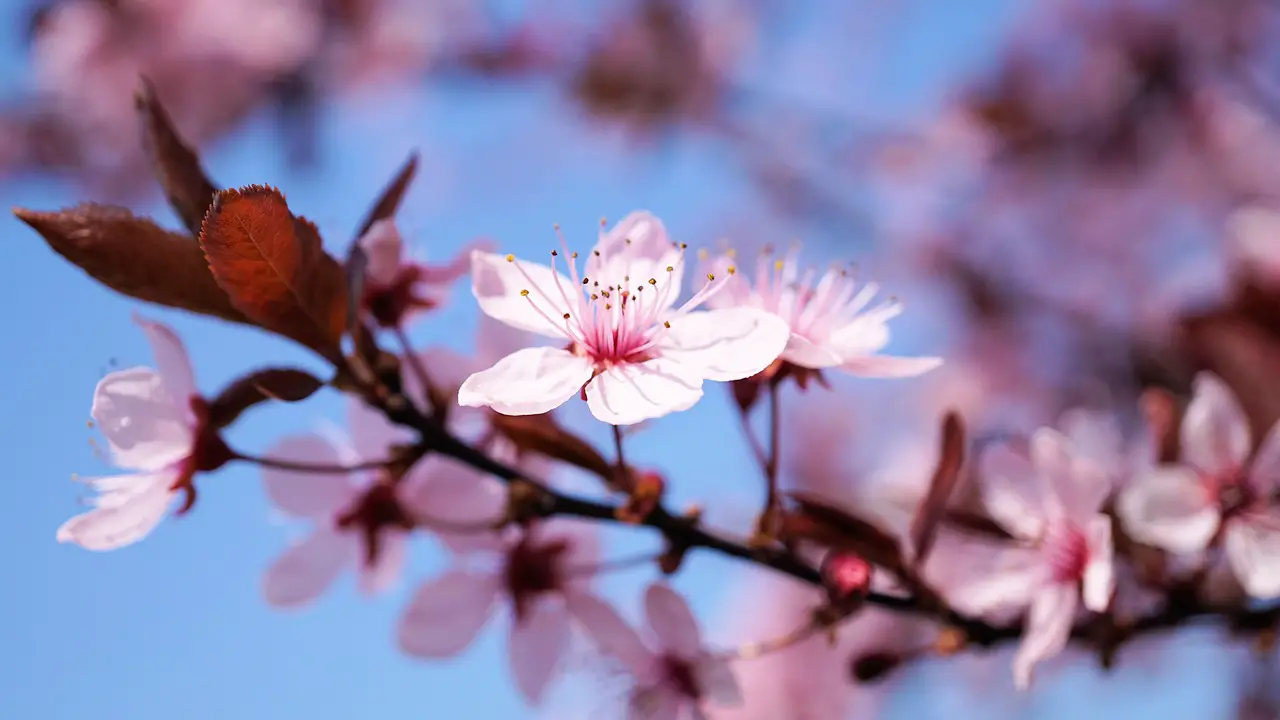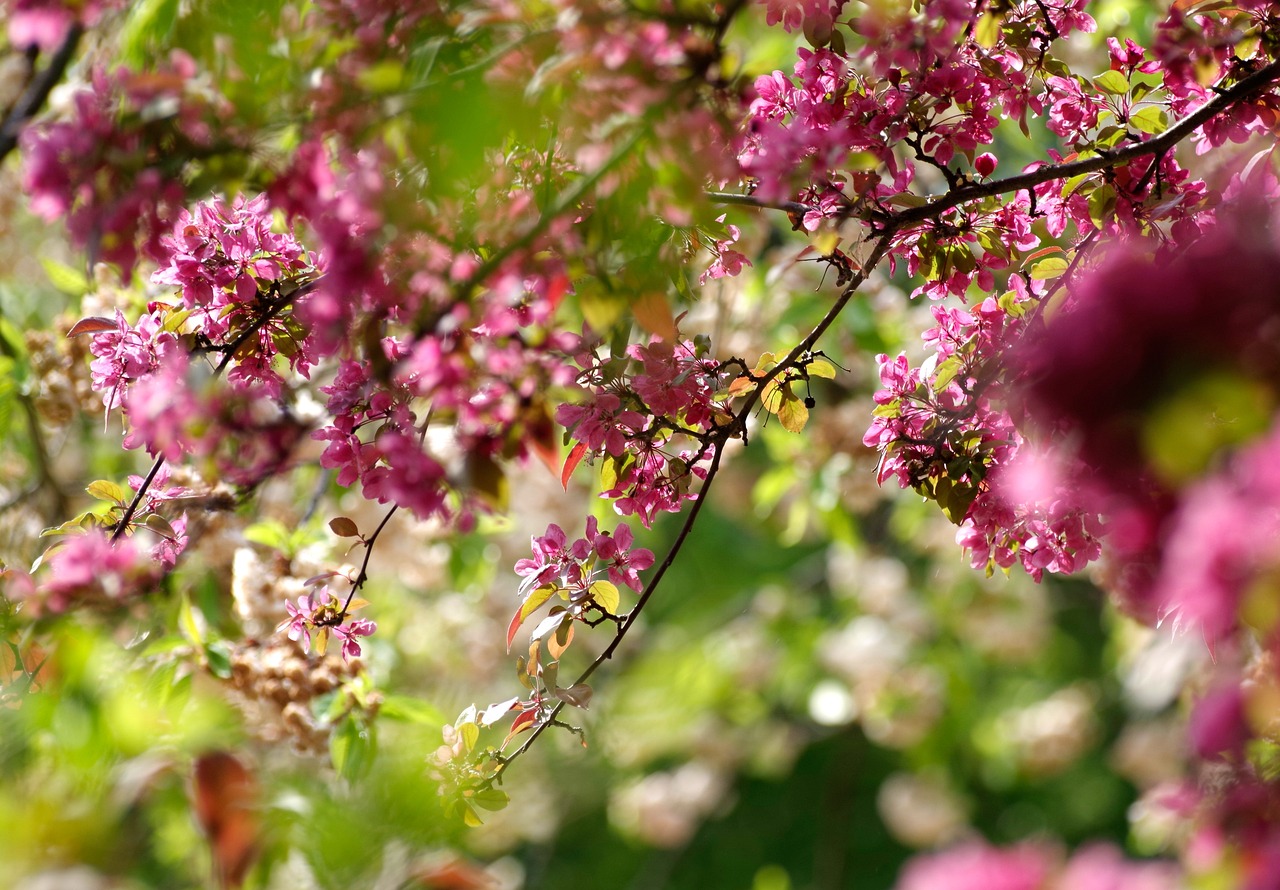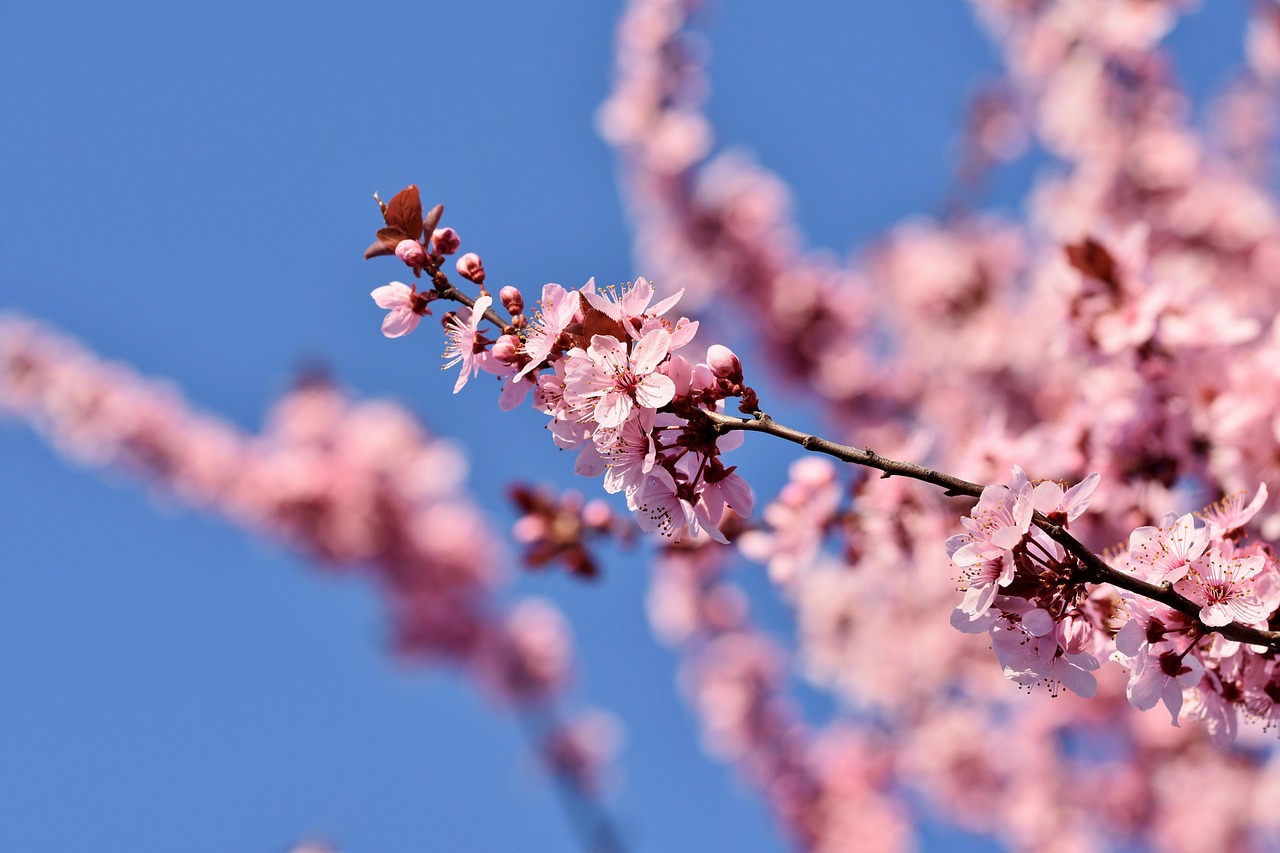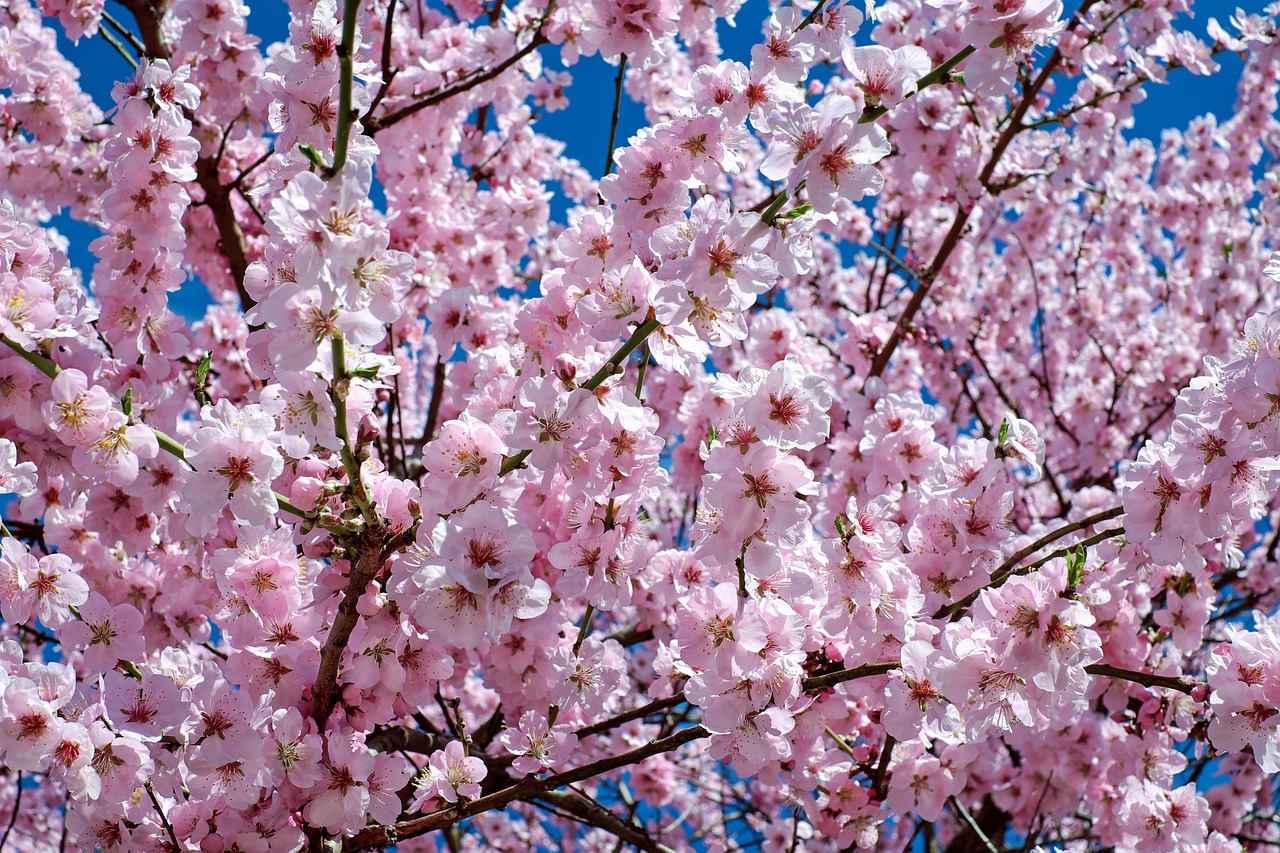The Yoshino cherry tree (Prunus x yedoensis) requires careful pruning to maintain its health and stunning appearance. Regular pruning encourages proper growth, promotes flowering, and prevents diseases. It is best to prune during the tree’s dormant season, typically late winter or early spring.
The Yoshino cherry tree is a popular ornamental tree, known for its beautiful pink blossoms in spring. Originating from Japan, it has become a favorite in many landscapes across the United States. Its delicate flowers and charming fragrance attract attention, making it a sought-after addition to gardens and parks. To ensure the longevity and health of this stunning tree, proper maintenance through pruning is essential.

Pruning not only shapes the tree but also enhances air circulation and sunlight penetration. These factors are crucial for the overall growth and health of the Yoshino cherry tree. Understanding the right techniques and timing for pruning can help you achieve optimal results.
Understanding the Yoshino Cherry Tree
The Yoshino cherry tree is a hybrid species that combines several characteristics from its parent trees. It typically grows between 20 to 40 feet tall and has a spread of about 20 to 35 feet. The tree features long-lasting flowers that bloom in clusters, creating a breathtaking sight in the spring.
Here are some key characteristics of the Yoshino cherry tree:

| Characteristic | Description |
|---|---|
| Scientific Name | Prunus x yedoensis |
| Height | 20 – 40 feet |
| Spread | 20 – 35 feet |
| Flower Color | Pink to white |
| Bloom Time | Early to mid-spring |
| Sunlight Requirements | Full sun |
| Soil Type | Well-drained, slightly acidic |
The Yoshino cherry tree thrives best in full sun and well-drained soil. It prefers slightly acidic conditions, which can be achieved by amending the soil with organic matter. This tree is also relatively tolerant of urban conditions, making it suitable for city landscaping.
When to Prune Yoshino Cherry Trees
Timing is crucial when it comes to pruning Yoshino cherry trees. The best time to prune is during late winter or early spring, just before the buds begin to swell. This timing minimizes stress on the tree and reduces the risk of disease. Avoid pruning during the fall, as this can encourage new growth that may not survive the winter.
Additionally, pruning after flowering can be detrimental because it removes flower buds for the following year. Therefore, careful consideration of timing will lead to a healthier tree and more vibrant blooms.

Tools Needed for Pruning
Before starting the pruning process, it is essential to gather the right tools. Using appropriate tools ensures clean cuts and minimizes damage to the tree. Here are some commonly used tools for pruning Yoshino cherry trees:
- Pruning Shears: Ideal for cutting small branches and stems.
- Loppers: Useful for thicker branches that are too large for shears.
- Saw: A small hand saw can help with larger limbs that need removal.
- Gloves: Protect your hands while working with branches and tools.
- Disinfectant: To clean tools and prevent disease transmission.
Pruning Techniques for Yoshino Cherry Trees
Mastering proper pruning techniques is vital for maintaining the health and aesthetics of your Yoshino cherry tree. Here are some essential techniques to follow:
- Remove Dead or Diseased Wood: Begin by removing any dead, damaged, or diseased branches to promote healthy growth.
- Crown Thinning: Thin out crowded branches to improve air circulation and light penetration.
- Crown Raising: Remove lower branches if they interfere with pedestrian traffic or landscaping beneath the tree.
- Slightly Reduce Height: If necessary, reduce height by trimming back the upper branches, but avoid excessive cutting.
- Avoid Topping: Never top a tree as it can lead to weak growth and increased susceptibility to diseases.
Using these techniques properly will help your Yoshino cherry tree flourish while maintaining its natural shape and beauty. Remember that less is often more when it comes to pruning; aim for gentle shaping rather than drastic cuts.

Regular maintenance through thoughtful pruning will not only enhance the beauty of your Yoshino cherry trees but will also ensure their health and longevity in your landscape. Understanding when and how to prune effectively sets the foundation for a thriving ornamental tree.
Common Diseases and Pests of the Yoshino Cherry Tree
To maintain the health of your Yoshino cherry tree, it is essential to be aware of potential diseases and pests that can affect it. Early detection and management can prevent severe damage and ensure the tree thrives. Below are some common issues to watch for:
Diseases
Yoshino cherry trees are susceptible to various diseases, which can lead to declining health. Here are a few prevalent diseases:
- Leaf Spot: This fungal disease causes dark spots on the leaves, leading to premature leaf drop. It is often exacerbated by wet conditions.
- Cankers: These are dead areas on branches or trunks, often caused by fungal infections. Cankers can girdle branches, leading to dieback.
- Powdery Mildew: This fungal condition appears as a white powdery substance on leaves and stems. It thrives in warm, dry conditions.
- Root Rot: Caused by overwatering or poorly drained soil, root rot can severely harm the tree’s root system, leading to decline.
Pests
In addition to diseases, several pests can threaten the health of your Yoshino cherry tree. Here are some common pests to monitor:
- Cherry Fruit Fly: This pest lays eggs in the fruit, leading to decay. It is crucial to manage this pest before the fruit ripens.
- Aphids: These small insects can weaken trees by sucking sap. They may also cause curling of leaves and attract ants.
- Spider Mites: These tiny pests can create webbing on leaves and cause yellowing. They thrive in hot, dry weather.
- Scale Insects: Scale can appear as small bumps on branches and leaves. They feed on sap and can weaken the tree significantly.
Pruning for Disease Prevention
Proper pruning techniques not only enhance the shape of the Yoshino cherry tree but also play a critical role in disease prevention. Here are specific pruning practices to help reduce disease risk:
- Remove Infected Wood: Always prune away any dead or diseased wood to prevent the spread of pathogens.
- Maintain Air Circulation: Thinning out congested areas allows better airflow, reducing humidity levels that favor fungal growth.
- Sanitize Tools: Use disinfectants on pruning tools before and after use to minimize disease transmission between cuts.
- Avoid Cutting During Wet Conditions: Pruning when the tree is wet can increase the likelihood of spreading disease spores.
Watering and Nutritional Needs
Caring for your Yoshino cherry tree involves understanding its watering and nutritional needs. Proper care will support healthy growth and vibrant blooms.
Watering Requirements
Yoshino cherry trees need consistent moisture, especially during their first few years of growth. Here are tips for effective watering:
- Deep Watering: Water deeply but infrequently to encourage deep root growth. Aim for one inch of water per week, adjusting based on rainfall.
- Avoid Overwatering: Ensure the soil drains well. Waterlogged conditions can lead to root rot.
- Mulching: Apply a layer of mulch around the base of the tree to retain moisture and regulate soil temperature.
Nutritional Needs
Nutrients are crucial for healthy growth. Here’s how to ensure your Yoshino cherry tree receives adequate nutrition:
- Soil Testing: Conduct a soil test to determine nutrient levels and pH. This helps tailor fertilization needs.
- Balanced Fertilizer: Use a balanced fertilizer (like 10-10-10) in early spring as new growth begins. Follow manufacturer instructions for application rates.
- Organic Options: Consider using compost or well-rotted manure as a natural fertilizer. These options improve soil structure and provide nutrients.
Seasonal Care Tips
Caring for your Yoshino cherry tree involves seasonal adjustments to maintenance practices. Following these tips throughout the year will help keep your tree healthy:
Spring Care
- Pruning: Complete any necessary pruning before buds break.
- Pest Monitoring: Start monitoring for early signs of pests as temperatures rise.
- Fertilizing: Apply fertilizer as new growth starts.
Summer Care
- Irrigation: Increase watering during hot months to ensure adequate moisture.
- Pest Control: Regularly check for pests and treat promptly if found.
Fall Care
- Crown Maintenance: Inspect branches for any signs of disease as leaves fall.
- Avoid Late Pruning: Refrain from pruning in late fall to prevent new growth before winter.
Winter Care
- Protection Against Cold: Apply mulch around the base to protect roots from freezing temperatures.
- Pest Inspection: Check for overwintering pests and remove any infested branches.
By following these seasonal care tips, you will help ensure that your Yoshino cherry tree remains healthy and vibrant throughout the year.
Fertilization and Soil Management for Yoshino Cherry Trees
Proper fertilization and soil management are crucial for the health and vitality of Yoshino cherry trees. Understanding their specific nutrient requirements will help you create the ideal growing conditions for these beautiful ornamental trees.
Understanding Soil Composition
The Yoshino cherry tree thrives in well-drained, slightly acidic soil. The right soil composition can significantly affect its growth, flowering, and overall health. Here are some key components to consider:
- Soil pH: The ideal pH level for Yoshino cherry trees is between 6.0 and 6.8. Testing your soil can help determine its acidity.
- Organic Matter: Incorporating organic matter such as compost or well-rotted manure improves soil structure and fertility.
- Drainage: Good drainage is essential to prevent root rot. Avoid heavy clay soils that retain water.
Fertilization Practices
Fertilization provides essential nutrients that promote healthy growth and vibrant blooms. Here are effective fertilization practices for Yoshino cherry trees:
- Timing: Fertilize in early spring as new growth begins. This timing helps support the tree during the active growing season.
- Types of Fertilizer: Use a balanced fertilizer with equal parts nitrogen, phosphorus, and potassium (N-P-K) such as 10-10-10 or 12-12-12. Slow-release formulations provide steady nutrition over time.
- Application Rate: Follow the manufacturer’s instructions for application rates based on the tree’s age and size. Over-fertilization can harm the tree.
Signs of Nutrient Deficiency
Recognizing signs of nutrient deficiency is essential for maintaining the health of your Yoshino cherry tree. Here are common deficiencies to look for:
- Nitrogen Deficiency: Yellowing leaves, particularly older leaves, and stunted growth indicate a lack of nitrogen.
- Phosphorus Deficiency: Dark green or purplish leaves and poor flowering can signal insufficient phosphorus.
- Potassium Deficiency: Yellowing leaf edges and poor fruit development may suggest a potassium deficiency.
Proper Watering Techniques
Effective watering techniques play a significant role in the health of Yoshino cherry trees. Proper moisture levels encourage strong root development and overall tree vitality.
Watering Frequency
The frequency of watering depends on several factors including soil type, weather conditions, and the tree’s age. Here are some guidelines:
- Newly Planted Trees: Water deeply once a week for the first growing season to help establish roots.
- Established Trees: Once established, Yoshino cherry trees typically require about one inch of water per week, adjusting for rainfall.
- Drought Conditions: During periods of drought, increase watering frequency to ensure the tree does not suffer from stress.
Watering Methods
The method of watering can also impact how effectively water reaches the roots. Here are some recommended techniques:
- Soaker Hoses: Using soaker hoses allows for slow, deep watering directly at the root zone.
- Drip Irrigation: This method delivers water efficiently to the base of the tree, reducing waste and promoting deep root growth.
- Hand Watering: For smaller trees, hand watering with a hose can ensure that water penetrates deeply into the soil.
Mulching Around Yoshino Cherry Trees
Mulching is an essential practice that benefits Yoshino cherry trees in various ways. It helps retain soil moisture, suppress weeds, and regulate soil temperature.
Benefits of Mulching
The following are key benefits of applying mulch around your Yoshino cherry tree:
- Moisture Retention: Mulch helps keep soil moisture levels consistent, reducing the need for frequent watering.
- Weed Suppression: A layer of mulch inhibits weed growth, decreasing competition for nutrients and water.
- Temperature Regulation: Mulch moderates soil temperature, keeping roots cool in summer and insulated during winter.
Selecting Mulch Materials
Choosing the right type of mulch is important for maximizing benefits. Here are some effective mulch options:
- Bark Mulch: Shredded bark or wood chips provide excellent moisture retention and slow decomposition.
- Compost: Applying a layer of compost enriches the soil while acting as a natural mulch.
- Pine Needles: Pine needles are lightweight and allow water to permeate easily while providing good coverage.
Applying Mulch Correctly
Proper application is key to maximizing the benefits of mulch. Follow these steps for effective mulching:
- Layer Thickness: Apply a layer of mulch 2 to 4 inches thick to provide adequate coverage without suffocating the roots.
- Avoiding Trunk Contact: Keep mulch at least 6 inches away from the trunk to prevent moisture buildup against the bark, which can lead to rot.
- Renewing Mulch: Refresh mulch annually or as needed to maintain its effectiveness and appearance.
Caring for your Yoshino cherry tree through proper fertilization, soil management, watering techniques, and mulching will contribute to its health and beauty over the years. Each of these practices works together to create a thriving environment for your ornamental tree.
Common Mistakes to Avoid When Pruning Yoshino Cherry Trees
While pruning is essential for the health and beauty of your Yoshino cherry tree, certain mistakes can hinder its growth and flowering potential. Being aware of these common pitfalls will help you achieve better results.
- Over-Pruning: Excessive pruning can stress the tree and reduce flowering. Always aim to remove only what is necessary.
- Ignoring Natural Shape: Pruning should enhance the tree’s natural form rather than drastically alter it. Avoid making unnatural cuts that disrupt its silhouette.
- Pruning at the Wrong Time: Pruning during the wrong season, especially in fall or late summer, can lead to loss of blooms. Stick to late winter or early spring.
- Using Dull Tools: Dull pruning tools can cause tearing and damage to branches. Always use sharp, clean tools for accurate cuts.
- Neglecting Tree Health: Failing to inspect the tree for signs of disease or pests before pruning can result in spreading issues. Always check for problems before starting.
Enhancing Landscape Design with Yoshino Cherry Trees
Yoshino cherry trees are not only beautiful but also versatile in landscape design. Their stunning spring blossoms can greatly enhance any garden or outdoor space. Here are some tips on how to integrate these trees into your landscaping plans:
- Grouping: Plant Yoshino cherry trees in groups for a dramatic effect in spring. Their clusters of blossoms create a stunning visual display.
- As Focal Points: Position them strategically as focal points in your garden. Their height and flowering can draw attention to other landscape features.
- Along Pathways: Plant them along walkways or driveways to create a beautiful canopy of flowers that enhances the experience of moving through the space.
- In Mixed Borders: Incorporate them into mixed borders with other flowering plants and shrubs for a diverse and vibrant landscape throughout the seasons.
- Consider Fall Color: While known for their spring blooms, Yoshino cherry trees also offer beautiful fall foliage, adding year-round interest to your garden.
Climate Considerations for Yoshino Cherry Trees
The climate in which you grow your Yoshino cherry tree plays a significant role in its success. Here are some factors to consider:
- Temperature: Yoshino cherry trees thrive in USDA hardiness zones 5 through 8. Ensure your local climate falls within this range for optimal growth.
- Sunlight Exposure: These trees require full sun, ideally 6 to 8 hours of direct sunlight each day. Consider their placement carefully to avoid shaded areas.
- Humidity Levels: While they tolerate a variety of humidity levels, consistent moisture is essential during dry spells. Monitor local weather conditions regularly.
- Wind Protection: Young trees are particularly vulnerable to strong winds. Providing windbreaks can help protect them from damage during storms.
Caring for Yoshino Cherry Trees in Urban Environments
Caring for Yoshino cherry trees in urban settings presents unique challenges and opportunities. Here are some considerations:
- Pavement and Soil Compaction: Urban soil is often compacted, which can restrict root growth. Consider raised beds or soil amendments to improve growing conditions.
- Air Pollution: Urban air quality can affect tree health. Regular monitoring and care are important to mitigate pollution effects.
- Irrigation Needs: Urban heat islands can lead to drier conditions. Adjust watering schedules accordingly to ensure adequate moisture.
- Crowded Spaces: In tight urban landscapes, ensure that trees are not overcrowded by buildings or other plants, which can lead to competition for resources.
Final Thoughts
Caring for a Yoshino cherry tree involves understanding its specific needs regarding pruning, watering, fertilization, and environmental factors. By following the guidelines outlined in this article, you can cultivate a healthy tree that thrives and produces stunning blooms each spring.
The combination of proper care techniques and awareness of potential challenges will enable you to enjoy the beauty of Yoshino cherry trees for many years. Whether planted as a focal point in a landscape design or grouped with other ornamental trees, these trees can transform any space into a picturesque setting.
Overall, investing time and effort into the care of your Yoshino cherry tree will yield significant rewards, adding both beauty and value to your property while creating lasting memories during its spectacular blooming season.
